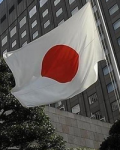-
GHD self-funds emergence as a global major
May 25, 2016
LONG-TERM planning has allowed GHD to build itself into one of the world’s largest private companies and the largest private Australian company servicing the engineering, architecture and environmental
consulting sectors. Reflecting on his eight years as Chief Executive, Ian Shepherd, who is retiring after three decades with the firm, explores GHD’s extraordinary growth in recent years . . .





